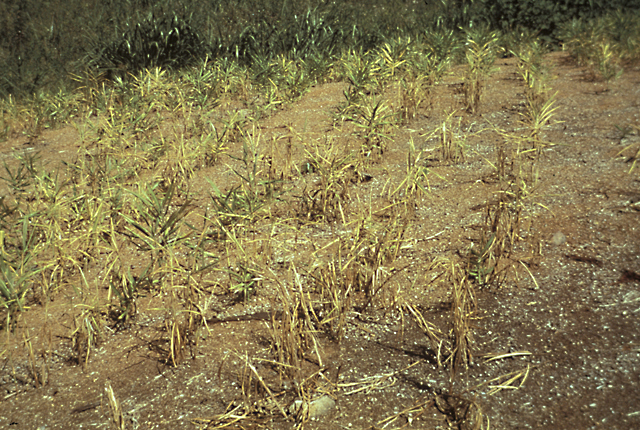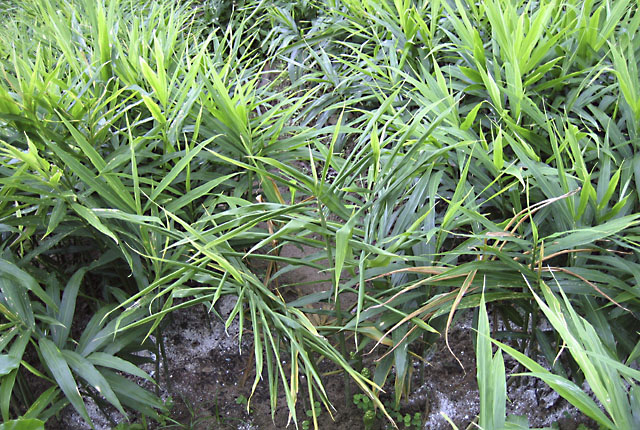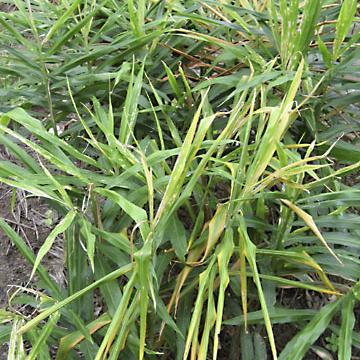DISEASE: Bacterial wilt
HOST: Ginger
Blackening of pith and cortex of rhizome.

Bacterial wilt | Ginger
DISEASE: Bacterial wilt
HOST: Ginger (Zingiber officinale)
PATHOGEN: Ralstonia solanacearum
PATHOGEN SYNONYM: Pseudomonas solanacearum
SOURCE: A. Alvarez
DISEASE: Bacterial wilt
HOST: Ginger
Field of wilted ginger plants.

Bacterial wilt | Ginger
DISEASE: Bacterial wilt
HOST: Ginger (Zingiber officinale)
PATHOGEN: Ralstonia solanacearum
PATHOGEN SYNONYM: Pseudomonas solanacearum
SOURCE: A. Hayward
DISEASE: Bacterial wilt
HOST: Ginger
Ginger plants with yellowing, marginal necrosis, and downward curling of infected leaves, in contrast to darker, fully expanded healthy leaves.

Bacterial wilt | Ginger
DISEASE: Bacterial wilt
HOST: Ginger (Zingiber officinale)
PATHOGEN: Ralstonia solanacearum
PATHOGEN SYNONYM: Pseudomonas solanacearum
SOURCE: M. Paret, N. Joy
DISEASE: Bacterial wilt
HOST: Ginger
Cupping and leaf necrosis precedes wilt and death of plants.

Bacterial wilt | Ginger
DISEASE: Bacterial wilt
HOST: Ginger (Zingiber officinale)
PATHOGEN: Ralstonia solanacearum
PATHOGEN SYNONYM: Pseudomonas solanacearum
SOURCE: M. Paret, N. Joy
DISEASE: Bacterial wilt
HOST: Ginger
Typical symptoms of bacterial wilt in ginger plantations, Kerala, India.

Bacterial wilt | Ginger
DISEASE: Bacterial wilt
HOST: Ginger (Zingiber officinale)
PATHOGEN: Ralstonia solanacearum
PATHOGEN SYNONYM: Pseudomonas solanacearum
SOURCE: M. Paret, N. Joy
DISEASE: Olive knot
HOST: Olive
Multiple infections of young stems. The bacterium invades vascular tissues during certain times of the year and may be isolated from branches that appear healthy.

Olive knot | Olive
DISEASE: Olive knot
HOST: Olive (Olea europaea)
PATHOGEN: Pseudomonas savastanoi pv. savastanoi
SOURCE: M. Schroth
DISEASE: Olive knot
HOST: Olive
Tree with knots/galls on branches along with twig dieback, which is associated with knots. Fusarium and Diplodia spp. infect through knots and are thought to be main reason for dieback.

Olive knot | Olive
DISEASE: Olive knot
HOST: Olive (Olea europaea)
PATHOGEN: Pseudomonas savastanoi pv. savastanoi
SOURCE: M. Schroth










